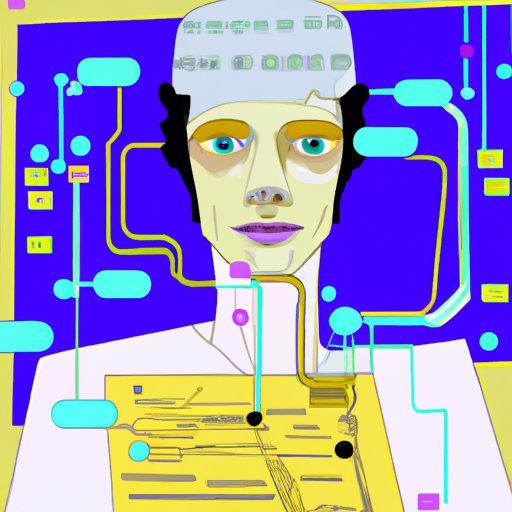Introduction
Artificial Intelligence (AI) is a broad field that focuses on developing computer systems that are capable of performing tasks that usually require human intelligence. Such tasks can range from visual perception, speech recognition, decision-making, and language translation. AI has come a long way since its inception, but when did the journey begin? This article will explore the history and development of AI, from its early beginnings to its current applications.

A Historical Overview of Artificial Intelligence: Exploring the Beginning of AI
The concept of AI was first introduced by Alan Turing in his 1950 paper, “Computing Machinery and Intelligence.” In it, Turing proposed the famous Turing Test, which aimed to determine whether a machine could exhibit intelligent behavior indistinguishable from that of a human. He argued that if a machine was able to pass the test, then it could be considered “intelligent.” Thus, the Turing Test became the benchmark for measuring AI capability.
In the early years of AI, experiments were conducted to see if computers could simulate human behavior. These experiments led to the development of the first AI programs, such as ELIZA, which simulated conversation between a human and a computer. Although these early programs lacked the sophistication of modern AI, they laid the groundwork for more advanced AI systems.

From Turing to Today: Tracing the Evolution of Artificial Intelligence
Since the 1950s, AI research has progressed significantly. In the 1970s, researchers began to focus on developing knowledge representation and reasoning capabilities. This led to the development of expert systems, which are computer programs designed to solve complex problems in a specific domain. Expert systems were able to outperform humans in certain tasks, such as medical diagnosis.
In the 1980s and 1990s, AI research focused on developing machine learning algorithms, which are algorithms that can learn from data. These algorithms allowed computers to autonomously improve their performance without requiring explicit programming. In the 2000s, deep learning algorithms emerged, which are based on artificial neural networks and are capable of learning complex patterns from large amounts of data. Deep learning algorithms have enabled computers to achieve superhuman performance in certain tasks, such as image recognition and natural language processing.
Today, AI is used in a variety of applications, including autonomous vehicles, facial recognition systems, and virtual assistants. AI is also being used to develop new drugs, diagnose diseases, and optimize business processes. AI is becoming increasingly important in our lives, and its impact on society is only expected to grow in the future.
How Human-Like Thinking Came to Be: The Early Years of AI
The development of AI has been largely driven by the work of pioneering researchers, such as John McCarthy, Marvin Minsky, Herbert Simon, and Alan Turing. These researchers laid the foundation for the development of AI by exploring the potential of computers to think like humans. They developed the first AI programs, such as ELIZA and SHRDLU, which were capable of solving simple problems and responding to basic commands.
The early AI programs relied heavily on rules and logic to solve problems. However, these programs lacked the ability to generalize beyond the specific problems they were designed to solve. This limitation led to the development of machine learning algorithms, which are capable of learning from data and making decisions without relying on explicit programming.
Uncovering the Mystery of When Artificial Intelligence Was Born
The history of AI is filled with milestones that mark the evolution of the field. In 1956, the Dartmouth Summer Research Project on Artificial Intelligence was held, which marked the official beginning of AI research. In 1966, Joseph Weizenbaum published ELIZA, the first AI program to simulate conversation between a human and a computer. In 1974, the first expert system was developed, which was capable of outperforming humans in certain tasks. In 1997, IBM’s Deep Blue defeated world chess champion Garry Kasparov, marking the first time a computer had defeated a human in a game of chess.
AI has come a long way since its humble beginnings. Today, AI is being used in a variety of applications, from autonomous vehicles to virtual assistants. As AI continues to evolve, its impact on society will only become more profound.
Conclusion
This article explored the history and development of AI, from its earliest beginnings to its current applications. It traced the milestones in AI history, from Alan Turing’s Turing Test to the development of machine learning and deep learning algorithms. Finally, it examined the pioneers behind the development of AI and the impact it has had on society.
AI technology has made tremendous progress over the past few decades, and its impact on society is only expected to grow. As AI continues to evolve, it will open up new possibilities for businesses, governments, and individuals alike.
(Note: Is this article not meeting your expectations? Do you have knowledge or insights to share? Unlock new opportunities and expand your reach by joining our authors team. Click Registration to join us and share your expertise with our readers.)
